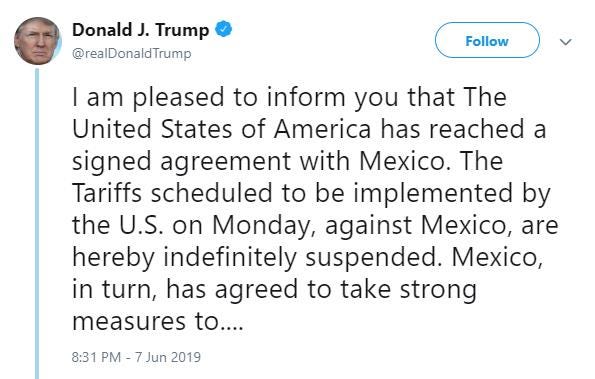How to Negotiate with Trump: 3 Game Theory Strategies That Shift the Power Balance
3 strategic insights that world leaders can use to shift the power balance in high-stakes deals.
To many, Donald Trump is an intimidating and unpredictable negotiator—dominating the room, making extreme demands, shifting positions seemingly at will. To many in his constituency, he is an amazing deal maker who vowed to reshape American policy in their favor. I am not here to judge the man politically, ethically, or otherwise—I can just make the observation that many people around the world struggle to understand on how to deal with him.
If you are one of those individuals that need or have to negotiate effectively with Trump or Trump-like figures, understanding and actively working on your strategic positioning is the most important first step. You must cut through the rhetoric, the multi-front campaign and the emotional news cycle. Many think they need to outmaneuver Trump with clever rhetoric in reality though, you really need to focus on how to reshape the perceived strategic equilibrium.
That doesn’t mean that communication is not important. As you reshape the strategic equilibrium, you also need to deliver that new strategic equilibrium. In a lot of cases, this should not be done publicly, nor directly in negotiations with Trump. Trump cares about a few things, but most importantly, he cares about his image. Your job is to reframe the new equilibrium in terms that boost his image and bring his project forward. You should allow him to pivot, sell the win to his constituency, allies, rivals and the world.
Today, I only want to focus on how to reshape the perceived strategic equilibrium. I will refer to examples from Trump’s first term on how countries succeeded in advancing their own agenda while negotiating with him.
1. Credible Commitments and the Power of Irreversibility
Game theory tells us that negotiations settle into a Nash equilibrium—a state where no player benefits from unilaterally changing strategy. Trump excels in negotiations where his counterpart lacks credible commitments, allowing him to dictate the terms. To counter this, negotiators must establish firm, binding commitments that force a re-calibration of the equilibrium.
How It Works:
Pre-commitment: Legally binding agreements or automatic retaliatory mechanisms can force Trump to factor in long-term costs rather than rely on short-term leverage.
Make it stronger by building coalitions: Aligning with other players (countries, business partners, stakeholders) ensures that any unilateral deviation carries heavy consequences. Coalition building extends domestically into the US too. Tommy Koh leveraged this extremely well when he negotiated the US-Singapore Free Trade Agreement.
Don’t be afraid to commit. Real commitments must have real costs, otherwise they are always ignored. The higher the cost, the stronger the impact on your leverage.
Example: China’s Tariff Retaliation in the Trade War
Early in 2018, Trump imposed tariffs on Chinese goods, expecting China to back down. Instead, one day after Trump’s announcement, China announced that it would tariff U.S. soybeans—directly targeting Trump’s voter base in the Midwest.
This locked in costs for Trump before he could escalate further—now, any additional tariffs on China would immediately backfire on U.S. farmers, a crucial electoral constituency.
China also committed to diversify its soybean sources and as a direct result, Brazil’s soybean sector flourished significantly.
A key partner to China in the US Soybean Business, is the American Farm Bureau Federation (AFBF), the most powerful US agricultural lobby. Trump’s actions triggered immense pressure from the AFBF, which warned that farmers were being sacrificed in a geopolitical dispute. The AFBF publicly urged the administration to de-escalate, emphasizing that retaliatory tariffs disproportionately harmed American agriculture.
As a result, Trump had to shift strategy and ultimately signed the Phase One deal in 2020, securing a partial retreat without fully conceding. Domestically in 2019, Trump paid US farmers subsidies worth 23 (!) Billion USD.
Why it worked: China used credible commitment, ensuring that Trump’s decision tree now included domestic economic and political consequences that limited his freedom to escalate.
2. Exit Strategies and Threat Neutralization
How It Works:
Define a Strong BATNA (Best Alternative to a Negotiated Agreement): If you can't get a good deal, make it clear you will walk away and not return. Trump exploits people who leave the door open for renegotiation.
Control the Clock: Trump thrives on running out the clock, pushing the other side into making concessions under pressure. Counteract this by making it clear that your deal has an expiration date.
Make it stronger by leveraging third-party influence: Trump is highly attuned on public perception. Using media, business leaders, or political allies to reinforce strategic messages can alter his calculus.
A Masterclass: Mexico Neutralizing Trump's 2019 Tariff Threat
In 2019, Trump threatened to impose tariffs on Mexico unless they agreed to stronger border security measures.
Mexico understood Trump’s need for a quick “win” but also knew he didn’t want a prolonged tariff war with a major U.S. supply chain hub.
Instead of directly fighting, Mexico leveraged third-party influence—U.S. corporate pressure (automakers in Texas and Michigan opposed the tariffs), along with push back from Republican senators and the U.S. Chamber of Commerce.
Mexico didn’t confront Trump—it let his own political allies do it.
At the same time, Mexico’s foreign minister Marcelo Ebrard publicly signaled that Mexico would not accept any deal if tariffs were imposed, warning of retaliatory tariffs on U.S. agriculture.
Trump needed a quick victory—so when Mexico made minor, face-saving commitments, Trump accepted a resolution that allowed him to claim victory without a prolonged dispute.
Why it worked: Mexico didn’t fight Trump head-on—it shaped his incentives. By quietly letting U.S. business leaders and Republican lawmakers push back on Trump, Mexico forced a resolution without making concessions of real substance.
This shows how exit strategies don’t have to be publicly aggressive—they just need to shift Trump’s incentives.
3. Strategic Signaling and Shaping Expectations
Trump often employs strategic ambiguity—keeping opponents off balance by making extreme claims, setting unpredictable red lines, or showing irrationality. Game theory teaches us that in signaling games, controlling information flow is the most important lever. By shaping expectations, you can steer Trump’s decision-making toward more favorable outcomes.
How It Works:
Combine messages of cooperation and credible threat to prevent him from assuming total control of the game.
Regularly provide Trump—or better his advisors—with clear evidence that continued aggression will have negative payoffs, prompting a reassessment of his approach.
Example: Iran & EU Defending the JCPOA
In 2018 and after Trump pulled out of the Iran nuclear deal (check the article I wrote a while ago on this topic) and reimposed sanctions, Iran used a calibrated signaling strategy:
Combining Messages of Cooperation and Credible Threats: It incrementally breached JCPOA limits in a reversible way (slightly increasing uranium enrichment), signaling that full compliance was still possible if Trump reversed sanctions.
In an action that further reinforced Iran’s negotiation position, the EU created the INSTEX financial mechanism to signal long-term economic incentives for Iran to stay in the deal.
Iran avoided direct escalation but made it clear that if Trump continued escalation, they would retaliate.
Iran outlasted Trump’s administration and resumed talks with Biden in 2021—showing that patient signaling changed the game.
Final Thoughts
Poker players bluff, intimidate, and control perception. If you change the table rules, you change the game. Game theory provides the tools to change the table rules. By creating binding commitments, shaping an Exit Strategy, and strategically signaling intent to change expectations, negotiators can redefine the rules of engagement and force even the most unpredictable players into stable, cooperative outcomes.
Negotiating with Trump is not a threat; it is an incredible opportunity for anybody willing to dance the right dance.
Thanks for reading Games & Negotiations! Subscribe to receive new posts and Negotiation Insights!






You have beautifully described how to find and use leverage effectively. Thank you!